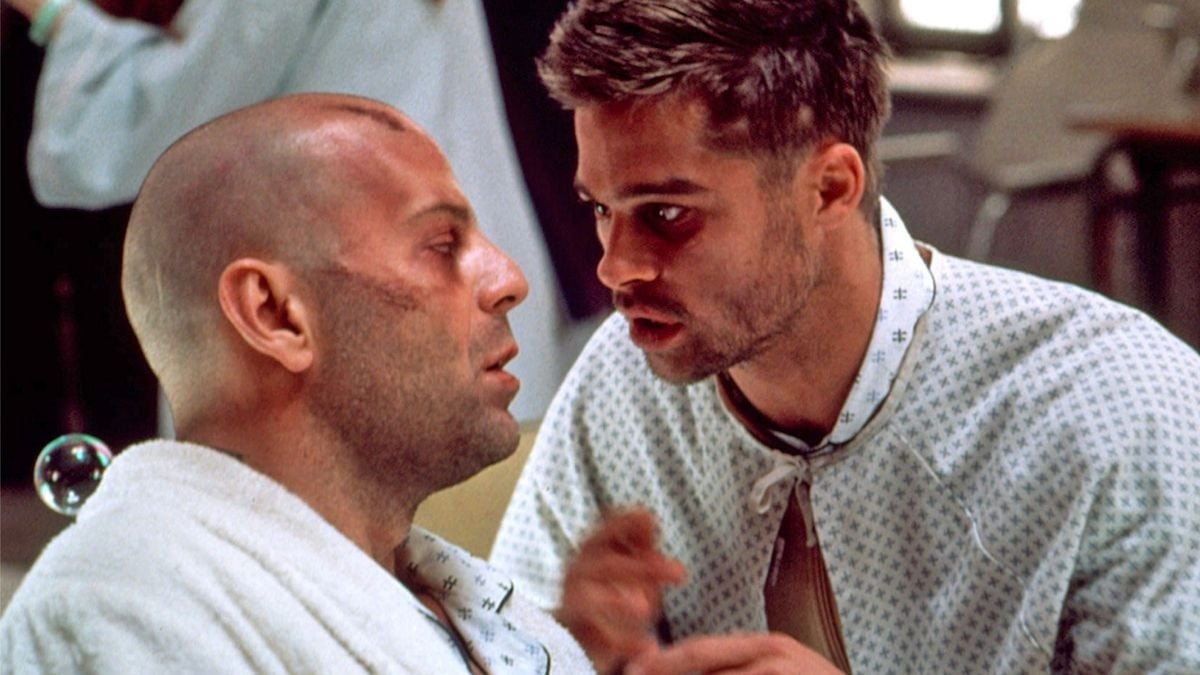Like any other film or TV show about time travel, 12 Monkeys has its fair share of timey-wimey complications. While that makes the movie exponentially more compelling to watch, it also makes it a tad more challenging for viewers to follow along with its narrative. Between constant time jumps—some less successful than others—and an overload of details to keep track of, it stands to reason that some might need an explainer on what the heck they just watched.
Twelve Monkeys‘ ending, in particular, leaves a lot of viewers struggling to wrap their heads around it, partly due to its ambiguity, and the fast-paced succession of events that led to its conclusion. As 12 Monkeys makes an incredible resurfacing on streaming, it’s time to dive back into the nitty gritty of James Cole’s (Bruce Willis) temporal mission fiasco.
A brief refresher of 12 Monkeys
The movie is set in 2035, in a post-apocalyptic world where humans cannot survive above ground. This is due to a worldwide viral outbreak (sound familiar?), which took place in 1996, organized by a group named The Army of the 12 Monkeys — or so it’s believed by the scientists of that era. These scientists enlist Cole, a prisoner, to take part in a time-traveling mission, with the goal of discovering the source of the virus outbreak and finding a sample of it in its purest form. By getting their hands on the virus, the scientists would be able to test it, and potentially find a cure. Worth noting that there is no intention of ever preventing the outbreak in 1996, for reasons unknown.
Cole sets off, jumping back and forth through time thanks to a faulty device, at the command and will of the scientists. Along the ride, he meets Dr. Kathryn Railly (Madeleine Stowe), a psychiatrist who first hospitalizes Cole, unbelieving of his “the end is near” ramblings. Eventually, Dr. Railly finds evidence that Cole speaks the truth, and the two find love in the mess of investigating The Army of the 12 Monkeys. As they soon find, the 12 Monkeys are not responsible for the outbreak.
The 12 Monkeys‘ ending
To understand this film’s ending scene, you have to understand its beginning. At the start of 12 Monkeys, Cole has a dream about his childhood, when he sees a man being shot and killed by airport security, while a blonde woman screams and embraces him. As we come to find out later, the man is none other than Cole himself, meaning that he unknowingly witnessed his own death, but how is that possible?
After Cole and Dr. Railly discover that the 12 Monkeys are not responsible for the outbreak, they opt to flee for Key West before the virus is spread. That would be a very smart decision if it weren’t for Cole contacting the scientists when they reach the airport, informing them that the Monkeys are not the source. Thanks to this, they are able to track Cole and send in his former cellmate from 2035, Jose (Jon Seda), to hand him a gun and instruct him to follow orders.
At the airport, Dr. Railly recognizes Dr. Peters (David Morse), who is a known virologist with a fascination for the apocalypse. She realizes that he’s the one responsible for the outbreak, as he is planning to embark on a voyage through all the cities where the virus first spreads. Dr. Railly tries to cause a scene to stop him, but no one listens, thus Cole takes off running after Peters, gun in hand. We all know how airport security reacts to gun threats. Security guards chase Cole and shoot him before he gets to Peters while Dr. Railly screams and young Cole watches the scene. The film comes full circle.
Later, we see that Dr. Peters made it to the plane with the virus, and sits beside one of the scientists from 2035, who introduces herself to Peters. She mysteriously claims to be “an insurance,” but viewers never find out what she is insuring. If we put two and two together, it’s safe to assume that the scientists sent a gun for Cole with the intent of getting him killed by security. Why would they do that? The plan was never to stop the virus from spreading, only to locate its source, so they had to remove Cole from the picture in order to ensure the outbreak.
It remains unclear why the scientists were so adamant about letting the virus spread. One could argue that messing with the past is too unpredictable to risk, and could result in catastrophe. It’s hard to imagine something worse than the state of humanity in 2035, though. Alas, the mystery remains.



